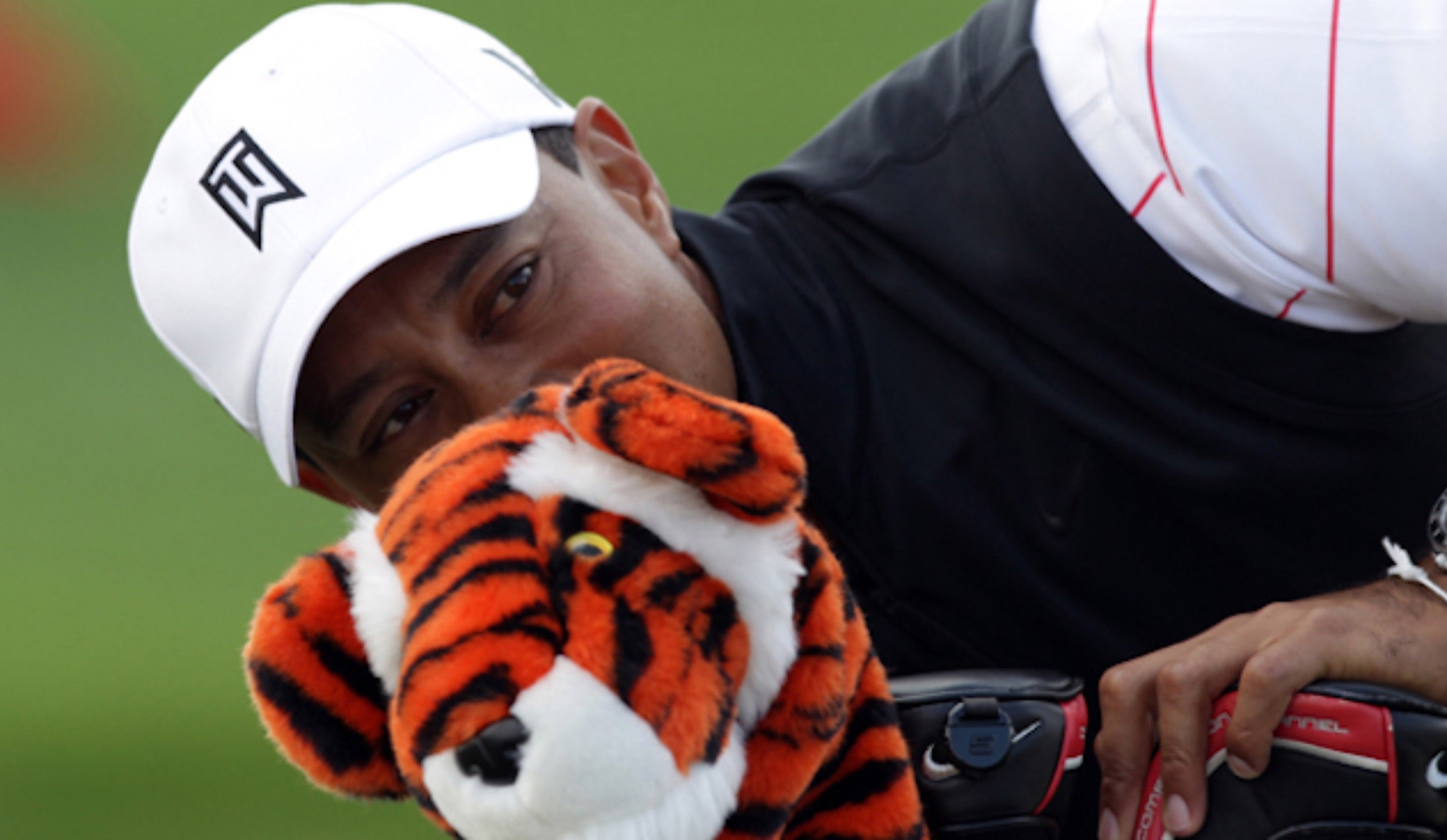Article: ONE HUNDRED YEARS IN HEAD-COVERS

ONE HUNDRED YEARS IN HEAD-COVERS
They’re the most visible part of the golf bag. They protect your most valuable golfing assets and behind the golf ball, they’re the thing most likely to be lost on a golf course. But the humble golf club head-cover has had a somewhat chequered history and, it's fair to say, they're still a bit of an enigma.
There can't be many things more frustrating for a golfer for example, than watching someone wrestling a stuffed alligator on a fairway that they could have striped their tee-shot down ten minutes ago.
But Tiger Woods won’t sign a contract if it means that his Driver isn't covered by a soft toy called Frank that his mom gave to him as a cub.
For some, the head-cover is a freebie that will rot until its last thread. For others, it’s a highly personal representation of who they are and what the game of golf means to them.
A STORY A CENTURY IN THE MAKING
The earliest record of a head-cover dates back to the early 1900s. But you’ll be hard pressed to find a picture of any until after the war (the second one). Walter Hagen definitely didn’t use any, neither did Henry Cotton and Bobby Jones won the grand slam naked, apparently!
But Sam Snead had some in the bag when he beat Ben Hogan in their legendary play-off for the 1954 Masters. As did Gary Player when he become the first overseas golfer to don the green jacket in 1961. While both Goldfinger and James Bond's bags where fully loaded in the famous golf scene from the 1964 film..
Jack Nicklaus was also a fan. He was covering his trusty MacGregors throughout the 1970s with a set that bore an uncanny resemblance to his legendary caddie, Angelo Argea (see below).
But even with the Golden Bear’s endorsement; had you walked out of a Pro Shop in 1980's with a new club it's unlikely to have come with a useable head-cover.
Back then, head-covers were still mostly sold by third-parties and without much fan-fare.
But as technology started to play a bigger part in the game, manufacturers saw an opportunity to emphasise the premium nature of their products and soon, the race began to see who could emblazon the biggest logo over one.

The first third-party head-cover I owned was a Great Big Bertha Hawk Eye (left). This was in 1997 (maybe ’98) and even though it was more Sesame than Carnaby Street, it still went walkabout while I was lighting up a clubhouse Sambuka.
Which I wasn't best pleased about. Because what lay beneath was not a Calloway, but an old persimmon. Callaway, you see, had realised that, such was the esteem in which their iconic driver was held; they were able to sell head-covers to people who didn’t actually own any of their clubs. That meant that cash-strapped student golfers like myself were happy to be mobile marketing machines as long as we could pretend we were gaming one.
FROM AN OLD SOCK TO A FASHION ACCESSORY
My Big Bertha cover didn't have a sock section protruding from the head. Which was interesting, because socks are the reason the head-cover is what it is.
Back in the day, when shafts were made of hickory and heads cast in iron. The shorter clubs had a tendency to ding against the longer ones and weaken them. A dodgy lie or two later and you could easily finish a round with 13-and-a-half bats.
So, players started protecting their clubs with their old winter woolies and the rest, as they say, is head-cover history.
That basic sock design lasted through the steal shaft era (where it had little practical use) but started serving its original purpose again for graphite clubs. While it takes a lot to fatally damage a graphite shaft, it’s not impossible. It is also very easy to scratch them, particularly if your clubs spend their life rattling around the trunk of a car.
So, by the turn of the century, the head-cover had gone from an old sock to a marketing mechanic and one now came with almost all drivers, fairways, hybrids and putters. By 2025, they're were an estimated 100million in circulation with the average bag sporting at least three of them.
A DESIGN HISTORY IN HEAD-COVERS
 I’ve owned almost every Titleist Driver from the 975 (released in 1996). That came with a red, black and white striped sock number (above) and a small fleece head. Which was great until it rained and then it looked like you'd found it in an ashtray!
I’ve owned almost every Titleist Driver from the 975 (released in 1996). That came with a red, black and white striped sock number (above) and a small fleece head. Which was great until it rained and then it looked like you'd found it in an ashtray!
The 983 (released in 2001) wasn’t just a great Driver, it was also the first Titleist to come with the more defined box head that used a synthetic covering to create a more rigid structure. Still with a sock, it looked great in the bag and (apparently) offered more protection for the club.
But it suffered from the same care issues as the 975 with the added problem of a heavy top that had a tendency to slide off unnoticed halfway around a golf course. That, and a PU coating which disintegrated at the first sign of humidity!
 For the next 10 years, however, distance club head-covers from most manufacturers were increasingly elaborate versions of this. It wasn’t until the middle of the last decade that we started to see structural changes.
For the next 10 years, however, distance club head-covers from most manufacturers were increasingly elaborate versions of this. It wasn’t until the middle of the last decade that we started to see structural changes.
In 2016, the 917 was the first Titleist to come with a one-piece soft cover as manufacturers started to move away from boxy designs and think more about style and practicality. The TS range (2018) took this trend even further, with Titleist adopting the classic two-piece glove design that is still the preferred option of own-brand head-cover makers.
These recent evolutions are probably a good indication of a new era of head-cover design as we move away from a marketing freebie to a much more personalised accessory.
THE COVID IMPACT
The Covid pandemic helped accelerate this as golf started to be played in more off-course facilities such as simulators and driving ranges.
The next generation of head-cover design then, is likely to come from third-parties who look to develop more personalised offerings and tap into a growing trend for accessories in sport.
But as I write this, there is still a dearth of high-quality, manufacturer-agnostic options. You can buy cheap, third-party PU covers, but they’ll disintegrate with one look at humidity. You can get good quality leather covers that won’t, but you’ll likely have to settle for a novelty style or a retro design that harks back to a golden age when err…nobody really used head-covers!
But the industry is definitely moving in a certain direction as major players start taking this market more seriously. The best examples of which are companies such as Bettinardi and Scotty Cameron who already have a range of elaborate high-end putter designs selling independently of the club at north of US$100.
These guys, however, are focused on enhancing their brand. They're still not much thought gone into the player experience (like what you do with an expensive head-cover when you need to play a shot). There's also next to nothing designed specifically for female golfers. That market still seems to be based on what men think women want, which, in my experience, is a mistake that you usually only get to make once!
Gavin McClement



